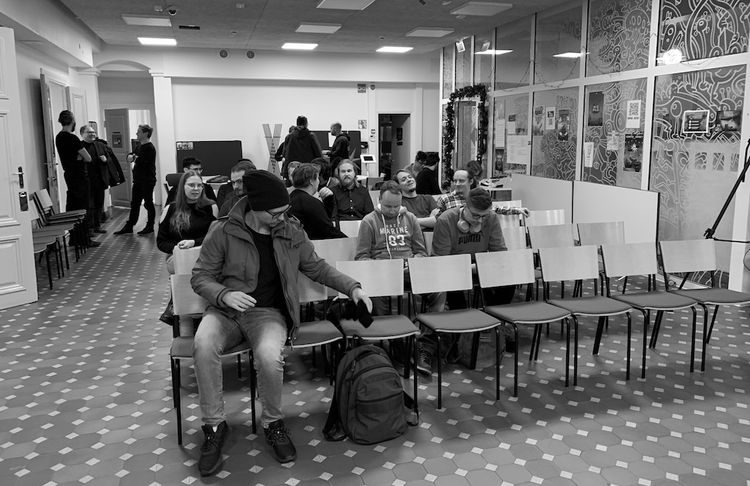Auditing the Gaming CEOs calendar

Joakim Achrén is the Founder and CEO of Elite Game Developers, a Helsinki-based company that helps gaming entrepreneurs in starting their first games company.
You want to stay on top of your calendar. Doing regular audits to your calendar will improve your impact on the company. The CEO is the vision holder and the person who is right up there at the front. They need to be sure that the time spent is relevant and well prioritized.
When you are less than ten people, things can flow quite dynamically in the company. People show up in the morning, you have standup meetings every morning and things get done. As a CEO of a small company, you can take on a role that is familiar to you, like business development, product management, programming or game design. This is fine, but you have to have the bigger picture in mind and start optimizing things.
As the team grows, you’ll want to add more delegation, one-on-one meetings and move towards company building, instead of product building. First off, you should start practicing the one-on-ones when your team is small. You’ll become a pro by the time you are big. But there’s more to this. What will you talk about in those one-on-one meetings? What is the foundation of the discussion?
Agenda
The CEO should think about an agenda that they’d want to pursue. This agenda needs to have full alignment with the company vision. The top priorities for the company can vary based on the stage of the company:
Especially in the early stages, here are some of the key components for the CEO’s agenda.
- Hold, protect, communicate and nurture the company mission, vision and core values
- Work towards a clear code of conduct for behavior at the company, based on core values, which builds a foundation for a company culture
- Construct, manage and nurture a leadership team
Let’s now talk about how a CEO can start working towards their agenda. Over-communication is the key here. Talking about these items to the staff, investors and possible future investors is the right approach.
One-on-ones with team members
Based on an HBR study, the majority of CEOs spend their time, 61%, in face-to-face meetings. These are also called one-on-one meetings. In the early stages, when there are only a few people in the company, it’s important for the CEO to set weekly or /bi-weekly one-on-one meetings with people in the company. Make it informal first but later, start creating formal processes around one-on-ones.
Mathilde Collin is a CEO I’ve been raving about. Her Medium posts about building a company are a treasure throve. She shared an interesting article about her process for one-on-one meetings, where she has divided them into three types:
- Weekly one-on-ones Both discuss how progress has been made, look to unblock any issues and to ask and answer questions. The goal of this one-on-one is to ensure that people are working on the right things and that they understand why their work matters to the business.
- Monthly one-on-ones These are for a pulse check on happiness. There is a survey sent out a few days before the one-on-one, asking about what the employee is happy and unhappy about, what they’d like to be better at, what are they proud about, etc. The manager gets the responses a day before the one-on-one, to prepare for the meeting.
- Career development one-on-ones Every six months, [the CEO and team member] meet up for a discussion on career development. The questions here are around the employee’s current role, what kind of careers do they admire, where they’d want their careers to be in 6 months, 2 years, 5 years. The manager and employee work together to identify growth opportunities, and they both commit to the next steps in the employee’s desired career path.
Mathilde says that ”If done effectively, these one-on-ones are an opportunity to show my team that I care about them, their professional success, and their overall happiness. It gives them an opportunity to step back and think about what they need, to be successful, and to hold me accountable for setting them up for this success.”
Here you can see Mathilde’s weekly calendar which she recently shared in a Tweet. The title 1:1 is a code for one-on-ones with her direct reports. Analyzing Mathilde’s calendar, we can see that she uses:
- 40% of her week to 1:1 meetings
- 30% for status updates and planning meetings
- 10% for reflection and meditation
How should you use this information? When I talk to CEOs on the Elite Game Developers podcast, I often ask them how they learned to become CEOs. Often, the answer is that they asked their peers for guidance. There’s a lot of great and useful copy and pasting going on, and each CEO can add their own iterations and improvements to the proven methods of communication.
Other meetings
When I start meeting regularly with a new gaming CEO, I want to take a look at their calendar and do an audit on their use of time. I can predict many of the leadership’s key concerns just by seeing the CEO’s meeting schedule. When certain meetings are missing, the consequences are often inevitable.
As with the one-on-ones, there are a few other types of meetings that I’d consider important to keep information flowing as it should. Every CEO should include them in their weekly or bi-weekly agenda.
Status update or standup meeting The standup meetings are the place where the CEO and their team can create accountability. It’s where the team can review what’s happened, align on the plan for the coming week, and share their blockers. Team members can hold each other accountable for executing their plans by asking good questions.
As the startup grows, it makes sense to split the status update in two. One for leaders, and a separate meeting for the entire team. Remember that the goal of the meeting is to relay a deep sense of what’s going on. It allows you to step out of a lot of departmental meetings that would otherwise swamp your calendar.
All-hands meeting Once the company is getting bigger and everyone can’t work in the same team anymore, you need to start organizing all-hands meetings. At these meetings, the leadership should give updates and deliver transparency into the agenda that the CEO has for the company.
Make sure that you allow people to ask questions at these meetings. The CEO can have the big picture in their mind, but it often doesn’t transfer that easily into the minds of the other people in the company.
The all-hands meeting is also an opportunity to recognize key milestones and acknowledge the team’s hard work. The key to a good all-hands is curation. Ask yourself, ‘What is really important that every single person in the company should know about?’
Retrospectives or postmortems Supercell is famous for celebrating their failures with champagne. I was there when the first game got killed after the soft launch numbers weren’t good enough to justify a global launch. Besides the champagne, the event marked the chance for the team to talk about their learnings to the whole staff.
To put it simply, a postmortem meeting would consist of three parts:
- What went well?
- What didn’t go well?
- How can we improve?
The key to a good retrospective is empathy. We’re all human and we all need connection. By acknowledging people’s successes, hearing their frustrations, and making improvements, the whole team and the whole company will continue on towards a more knowledgable and happier future.
Friday recognition Rituals are important. At Next Games, we had an all-hands event every Friday called Kudos, where each employee would draw a wrapped candy from a box and then give it to someone in the company. When giving the candy to that person, they’d need to speak out loud what value of the company this person had represented in their actions during the week. The main idea with Kudos was to show gratitude.
In a startup, it can take years for hard work to pay off. While most leaders understand the value of celebrating the small wins, it’s really hard to do in practice. Failing to recognize hard work can build up into resentment. Allowing yourself and your team to celebrate the small wins on a regular basis can help meet the team’s need for recognition and increase a sense of connection.
Review and reflection
How should a CEO go about reviewing and reflecting on the time spent at work? One clear way is to constantly ask feedback from your team members.
Conduct surveys to figure ways of improvement. Key questions should be around the following areas:
- ”What is being left outside of the meetings?”
- ”Are there issues that we don’t cover enough?”
- ”In what areas should the leadership improve their communication?”
On reflection, what I do is I write a weekly look back on Evernote, which helps to make sure that I’m working to improve my work and work/life integration. Here’s a template that I use. I create a fresh copy every Sunday evening and write my reflections into that copy.
Weekly look back template
- Five things I accomplished
- What I’m satisfied and dissatisfied with?
- What I’m taking away for next week
- Pause. What do I want? Pause. What do I really want?
Saying no to external meetings
As the CEO of a small but growing company, you will start to get invited to meetings with all sorts of people. “Let’s have coffee next week?” is a common email that I can find at least twice a week in my inbox. When you’re a first-time founder, it can be difficult to say “no” to meetings with people from the industry. How do you make sense of what is relevant at what’s irrelevant?
Let’s look at the CEO’s agenda again:
- Hold, protect, communicate and nurture the company mission, vision and core values
- Work towards a clear code of conduct for behavior at the company, based on core values, which builds a foundation for a company culture
- Construct, manage and nurture a leadership team
If the meeting request doesn’t push any of these forward, you should really clearly evaluate if you’re better off not taking the meeting. But how do you say “no”, in a way that it doesn’t make the other person feel bad about the rejection?
Mark Suster, the founder partner of Upfront VC, shares a proper “No” email template in his article. Here’s an example:
Hi Mark,
Great to hear from you. Hope all is well. Fortunately, my company is starting to take off, and I’m under extreme pressure to deliver against some ambitious goals. Unfortunately, I won’t be able to connect right now.
Best, Joakim
The point here is to close the door to further communication. Do it nicely in a way that truthfully explains the situation, but don’t leave things open-ended. Start using the template for saying no to salespeople, that’s the easiest.
Then, say no to investor meetings when you’re not raising money. Board members make random requests. You don’t have to meet with all of them. Write a template for each of these cases, including messages for LinkedIn. Even for that email from your long-lost friend looking for a meeting.
Final words
Thanks for reading this article on auditing the gaming CEO’s calendar. I suggest you subscribe to my newsletter where I’m sharing more on building successful gaming startups.
More articles that you might like.





